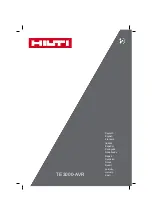
51
|
www.lakeshore.com
(FIGURE 3-4). If it will not unwind by hand, use a box cutter (or knife) to carefully
cut the plastic wrap and remove it.
5. Using a
q
in or adjustable wrench, loosen and remove the bolts that attach the
two long red horizontal cross braces to the crate base (FIGURE 3-5). There is a nut
that must be held by a second wrench on the bottom of the crate.
The Model CRX-6.5K has four lifting eyelets attached to the probe station table for
lifting the probe station off the crate base (FIGURE 3-3).
To prevent damage to the probe station, do not allow the lifting equipment to
contact the bellows or the micromanipulation stages.
6. Using lifting equipment, lift the probe station off the crate base (FIGURE 3-3).
7. Move the crate materials out of the work area. It is advisable to save these in the
event that you need to return the probe station.
8. Move the probe station to its final location. When you set it on the floor, the
weight of the entire station will be on the long red cross braces secured to the
outer probe station stand.
9. Remove the four lifting eyelets from the probe station. Save these in the event
that you need to move the probe station.
10. Set the probe station stand using this procedure:
a.
Using a ¾ in or adjustable wrench, lower the four feet of the probe station
outer stand (FIGURE 3-6).
FIGURE 3-4
Remove the plastic wrap
FIGURE 3-5
Remove the bolts attaching the red, horizontal cross
braces to the crate base
















































